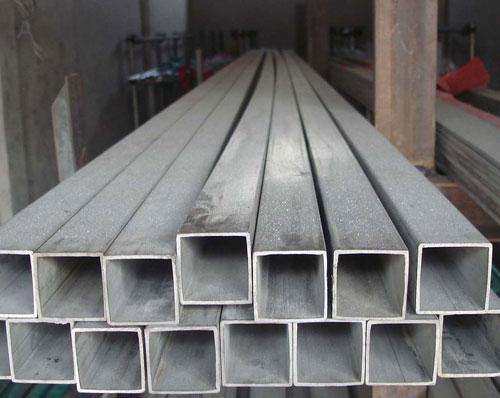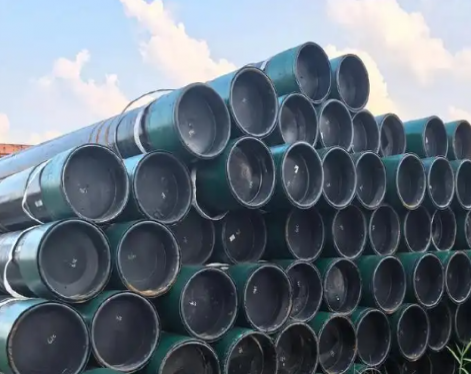stainless steel square tube is a kind of hollow long steel, which is widely used as pipeline for transporting fluids, such as oil, natural gas, water, gas, steam, etc. In addition, when the bending and torsional strengths are the same, the weight is lighter.Therefore, it is also widely used in the manufacture of mechanical parts and engineering structures. It is also commonly used to produce various conventional weapons, barrels, shells, etc.
Stainless steel square tube forming characteristics
1. Straight into a square
There are two types of straight square hole patterns: the first type is special hole pattern, and the forming methods of this method are as follows:Fixed-point variable-diameter method, variable-point fixed-diameter method, external-movement method of fixed-diameter bending point, and internal-external-movement method of fixed-diameter bending point. The second type is the general hole pattern, which is the combination product of the third and fourth types of the special hole pattern forming method. In this pass, the upper roller at the bend has a fixed rounded corner, and the same upper roller is used to solve different belt thicknesses.In fact, a fuzzy technology is used to deal with the problem. This technology saves a lot of rolls and is loved by a large number of manufacturers.
When straight and square, the corners are bent relative to the neutral layer of the strip, the inner corners are compressed, the outer corners are pulled, and the corners are stressed as a result: the outer stretched strip is thinned,From the physical phenomenon, the metal lattice changes to produce cold work hardening, especially when the general-purpose hole-shaped strip is hard, the corners may break. In addition, the dimensional accuracy of the straight square is mostly solved by sizing: first, it increases the equipment load; second, the steel strip also produces part of cold work hardening, which affects the intrinsic quality of the profile.
2. Round to Square
There are generally two forming methods for round-to-square: first, box-type hole deformation.The box-type pass deformation is that the parent pipe is deformed on the parent pipe by alternating action of at least four flat rolls and three vertical rolls or more passes, which can be simply described as:The flat roller is extruded up and down, referred to as "flattening"; the vertical roller extruded left and right is referred to as "extrusion".The mother tube gradually approaches the shape of the profile in several processes of "flattening" and "extrusion", and finally deforms into the desired profile. The second and fourth roll deformation. Four-roll deformation means that four rollers form a hole in the same plane, and the mother tube passes through the hole, which is similar to drawing deformation, but it turns the drawing fixed die into a separate rolling die.
When the round is changed to the square, the main pipe is deformed under pressure in the hole pattern. The hole shape design takes into account the elastic limit of the base metal, that is, the pressure must not exceed the elastic limit. When the elastic limit is exceeded, the base metal will "unstable" and cause waste.It can be seen that the round-to-square forming does not change the physical phenomenon of the strip. In addition, the shape and dimensional accuracy of round and square are guaranteed by hole type and adjustability, so its shape and size accuracy is high.Furthermore, since the round-to-square deformation is carried out under pressure, the thickness of the corners does not decrease but tends to increase.Compared with the straight square, the load-resistant capacity of the profiles with the same thickness and the same specification is significantly improved.

Note: Different forms of round and square quality
(1) Box molding
In the process of box forming and deformation, it can be divided into the ideal centerline forming method and the bottom line forming method. In order to reduce the roll change time, manufacturers generally use the bottom line forming method.When the bottom line is formed, the upper edge of the whole process from the parent tube to the profile is the downhill process, and the downhill amount is the difference between the diameter of the round tube and the height of the stainless steel square tube.It can be said that the upper part is a process of deformation from compression to tension, while the bottom part is a process of compression.During box forming, no matter what the forming method is, during the forming process, the base metal will rub against the roll pass, especially the two side walls of the drive roll flat roll pass.Since the speed difference (the side can be regarded as a surface composed of countless lines of different diameters) is heavily scratched, it is possible to scratch both sides.In addition, during the deformation of the box-type hole shape, due to the alternating "flattening" and "extrusion", the force consumption is relatively large, and the thick-walled pipe is difficult to meet the shape requirements.
(2) Four-roll deformation.
In this deformation, the four roll surfaces are in contact with the base metal. If the bending strength of the base metal itself is removed, it can be considered that the pressures on the four roll surfaces are roughly equal.The upper and lower pressures are reflected in the left and right pressures, and the left and right pressures are also reflected in the upper and lower pressures.Unless the debugging is not in place, there is a difference between the upper and lower pressure and the left and right pressure. With the deepening of the deformation, the R curvature of the roll surface gradually increases, the depth of the arc surface decreases, and the contact velocity difference reflected on the arc surface becomes smaller and smaller, which is very beneficial to the deformation of the base metal.
Stainless steel square tube forming characteristics
1. Straight into a square
There are two types of straight square hole patterns: the first type is special hole pattern, and the forming methods of this method are as follows:Fixed-point variable-diameter method, variable-point fixed-diameter method, external-movement method of fixed-diameter bending point, and internal-external-movement method of fixed-diameter bending point. The second type is the general hole pattern, which is the combination product of the third and fourth types of the special hole pattern forming method. In this pass, the upper roller at the bend has a fixed rounded corner, and the same upper roller is used to solve different belt thicknesses.In fact, a fuzzy technology is used to deal with the problem. This technology saves a lot of rolls and is loved by a large number of manufacturers.
When straight and square, the corners are bent relative to the neutral layer of the strip, the inner corners are compressed, the outer corners are pulled, and the corners are stressed as a result: the outer stretched strip is thinned,From the physical phenomenon, the metal lattice changes to produce cold work hardening, especially when the general-purpose hole-shaped strip is hard, the corners may break. In addition, the dimensional accuracy of the straight square is mostly solved by sizing: first, it increases the equipment load; second, the steel strip also produces part of cold work hardening, which affects the intrinsic quality of the profile.
2. Round to Square
There are generally two forming methods for round-to-square: first, box-type hole deformation.The box-type pass deformation is that the parent pipe is deformed on the parent pipe by alternating action of at least four flat rolls and three vertical rolls or more passes, which can be simply described as:The flat roller is extruded up and down, referred to as "flattening"; the vertical roller extruded left and right is referred to as "extrusion".The mother tube gradually approaches the shape of the profile in several processes of "flattening" and "extrusion", and finally deforms into the desired profile. The second and fourth roll deformation. Four-roll deformation means that four rollers form a hole in the same plane, and the mother tube passes through the hole, which is similar to drawing deformation, but it turns the drawing fixed die into a separate rolling die.
When the round is changed to the square, the main pipe is deformed under pressure in the hole pattern. The hole shape design takes into account the elastic limit of the base metal, that is, the pressure must not exceed the elastic limit. When the elastic limit is exceeded, the base metal will "unstable" and cause waste.It can be seen that the round-to-square forming does not change the physical phenomenon of the strip. In addition, the shape and dimensional accuracy of round and square are guaranteed by hole type and adjustability, so its shape and size accuracy is high.Furthermore, since the round-to-square deformation is carried out under pressure, the thickness of the corners does not decrease but tends to increase.Compared with the straight square, the load-resistant capacity of the profiles with the same thickness and the same specification is significantly improved.

Note: Different forms of round and square quality
(1) Box molding
In the process of box forming and deformation, it can be divided into the ideal centerline forming method and the bottom line forming method. In order to reduce the roll change time, manufacturers generally use the bottom line forming method.When the bottom line is formed, the upper edge of the whole process from the parent tube to the profile is the downhill process, and the downhill amount is the difference between the diameter of the round tube and the height of the stainless steel square tube.It can be said that the upper part is a process of deformation from compression to tension, while the bottom part is a process of compression.During box forming, no matter what the forming method is, during the forming process, the base metal will rub against the roll pass, especially the two side walls of the drive roll flat roll pass.Since the speed difference (the side can be regarded as a surface composed of countless lines of different diameters) is heavily scratched, it is possible to scratch both sides.In addition, during the deformation of the box-type hole shape, due to the alternating "flattening" and "extrusion", the force consumption is relatively large, and the thick-walled pipe is difficult to meet the shape requirements.
(2) Four-roll deformation.
In this deformation, the four roll surfaces are in contact with the base metal. If the bending strength of the base metal itself is removed, it can be considered that the pressures on the four roll surfaces are roughly equal.The upper and lower pressures are reflected in the left and right pressures, and the left and right pressures are also reflected in the upper and lower pressures.Unless the debugging is not in place, there is a difference between the upper and lower pressure and the left and right pressure. With the deepening of the deformation, the R curvature of the roll surface gradually increases, the depth of the arc surface decreases, and the contact velocity difference reflected on the arc surface becomes smaller and smaller, which is very beneficial to the deformation of the base metal.









